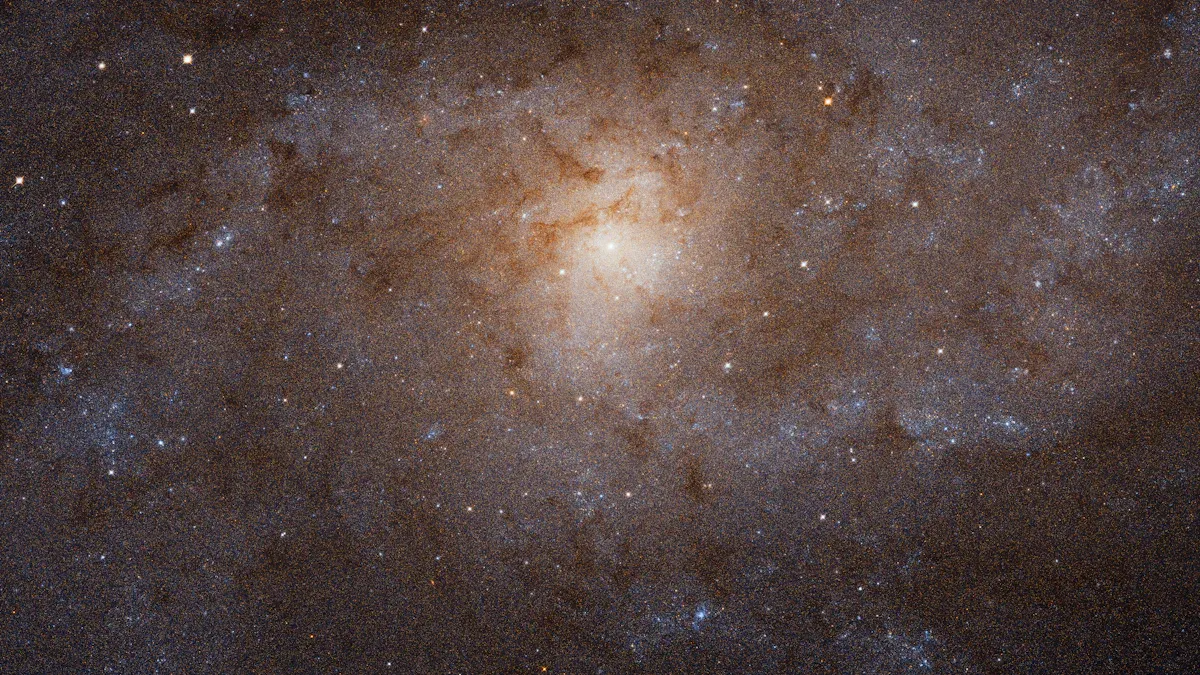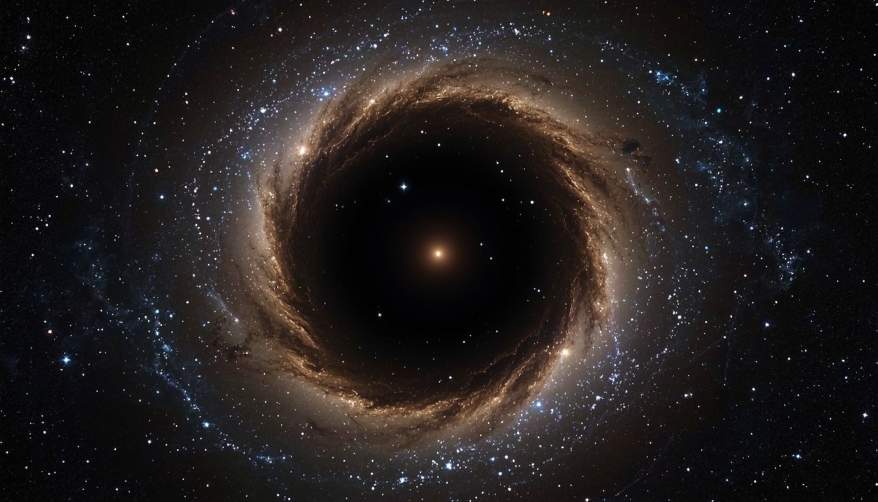Top 10 Largest Galaxies Ever Discovered
You’re about to explore the largest galaxies ever found. Astronomers use isophotal diameter to measure each galaxy’s true size in light-years. Therefore, these giants stretch over a million light-years, making the Milky Way look small. The Milky Way’s structure is less extended and less massive than the biggest galaxies. Its spiral arms average a 13.1° pitch angle, showing a clear difference from larger types. Further, reliable surveys like VUDS confirm each galaxy’s size.
You’ll spot each galaxy’s name, type, and what makes it special. Comparing these galaxies to the Milky Way helps you see just how vast the universe is.
Largest Galaxies: What Defines Size
Diameter and Mass
When you look at the massive galaxies, you might wonder how astronomers measure their size. Additionally, they use a few main methods. The most common way is by measuring the diameter. Thus, this is the distance from one edge of a galaxy to the other. Astronomers often use the effective radius, which tells you how far the stars spread out from the center.
- The effective radius (r_e) is key for massive galaxies.
- Scientists track how this radius changes over time. They see that it can grow up to five times from early to present-day galaxies.
- Sérsic indices help classify a galaxy as elliptical or disk-like.
- Most growth happens in the outer parts, not the center.
- Surveys like POWIR and GNS give us these numbers.
You also need to think about mass. The bigger the galaxy, the more mass it holds. There is a strong link between a galaxy’s size and its mass. Further, studies show that as the mass goes up, so does the diameter. This pattern holds true for many galaxies across different times in the universe. The CARLA survey even shows that galaxy clusters can contain galaxies with much larger diameters if they have more mass. Therefore, this relationship helps you rank the largest galaxies.
Star Count
Another way to measure a galaxy is by counting its stars. The more stars, the bigger the galaxy usually is. Surveys like VUDS use both images and star counts to measure size. They look at how many stars shine above a certain brightness. Thus, this gives a good idea of the galaxy’s true size.
Recent data from the JWST PEARLS survey splits galaxies by their mass. It shows that the brightest galaxies are not always the most massive. Instead, galaxies with medium mass often shine the brightest. Still, the galaxies tend to have the most stars. Hence, this makes the star count a useful tool for ranking.
These methods—diameter, mass, and star count—help you understand what makes a galaxy one of the largest galaxies ever found.
Top 10 Galaxies: Quick Comparison
You might wonder how the top 10 galaxies stack up against each other. This table gives you a quick look at their names, types, diameters, and where you can find them in the sky. Also, you will see just how much bigger some of these are compared to the Milky Way.
| Rank | Galaxy Name | Type | Diameter (light-years) | Location |
|---|---|---|---|---|
| 1 | ESO 383-76 | Elliptical | 1,000,000 | Centaurus Cluster |
| 2 | IC 1101 | Elliptical | 870,000 | Abell 2029 |
| 3 | Hercules A | Elliptical | 700,000 | Hercules Cluster |
| 4 | A2261-BCG | Elliptical | 1,000,000 | Abell 2261 |
| 5 | ESO 306-17 | Elliptical | 600,000 | Hydra Cluster |
| 6 | Comet Galaxy | Spiral | 600,000 | Abell 2667 |
| 7 | Condor Galaxy | Barred Spiral | 522,000 | Pavo constellation |
| 8 | Messier 87 | Elliptical | 240,000 | Virgo Cluster |
| 9 | Andromeda Galaxy | Spiral | 220,000 | Andromeda constellation |
| 10 | Milky Way | Spiral | 105,000 | Local Group |
Certainly, you can spot a clear pattern here. Most of the largest galaxies are elliptical. These types often show higher concentration and less clumpiness than spirals. Recent studies use concentration, asymmetry, and clumpiness to classify each galaxy. Therefore, these numbers help scientists compare galaxies across different types and angles.
Astronomers use data from surveys like SDSS-IV/MaNGA and APOGEE to compare the Milky Way with these giants. Additionally, they look at mass, star formation, and structure. The Milky Way stands out for its detailed star data, but it cannot match the sheer size of the massive galaxies.
Recent simulations also show that galaxy type and size can be predicted with high accuracy. Scientists use machine learning to sort galaxies by their features. Thus, this helps confirm the rankings you see in the table.
Largest Galaxies in the Universe: Ranked List
1. ESO 383-76
You stand before the largest known galaxy. ESO 383-76 stretches about 1,000,000 light-years across. This elliptical galaxy sits in the Centaurus Cluster. You see a smooth, round shape with little structure. Most stars gather near the center. Thus, this massive galaxy holds trillions of stars. Also, it dwarfs the Milky Way.
- Astronomers find that elliptical galaxies like ESO 383-76 dominate the top of the size charts.
- Simulations and surveys show that about 87% of the most massive galaxies are elliptical.
- ESO 383-76 likely grew through many galaxy mergers.
- Certainly, you notice that it sits near the supergalactic plane, where the biggest galaxies cluster.
2. IC 1101
IC 1101 comes next. This elliptical galaxy measures about 870,000 light-years wide. You find it in the Abell 2029 cluster. Its size makes it one of the largest galaxies in the universe.
- IC 1101 has a bright, dense core.
- It contains hundreds of billions of stars.
- Scientists believe it grew through many major mergers.
- Most massive galaxy mergers happen in clusters like Abell 2029.
3. Hercules A
Hercules A stands out as a radio galaxy. It spans about 700,000 light-years. You spot it in the Hercules Cluster.
- This elliptical galaxy has huge radio jets.
- Therefore, these jets stretch far beyond the visible stars.
- The central black hole powers these jets.
- Hercules A is much larger than the Milky Way.
4. A2261-BCG
A2261-BCG is the brightest cluster galaxy in Abell 2261. Its diameter reaches about 1,000,000 light-years.
- You see a round, diffuse shape.
- Astronomers use precise counts of companion galaxies to measure its size.
- Studies show that A2261-BCG has grown by merging with smaller galaxies.
- Also, its core is unusually large and may lack a central black hole.
- The cluster shows some substructure, but A2261-BCG still follows the trends for the largest known galaxy.
5. ESO 306-17
ESO 306-17 is another elliptical galaxy. It stretches about 600,000 light-years. You find it in the Hydra Cluster.
- This galaxy has a smooth, featureless appearance.
- It sits at the center of its cluster.
- Mostly stars gather in the core.
- Like other large galaxies in the universe, it likely grew through many mergers.
6. Comet Galaxy
The Comet Galaxy looks different. It is a spiral galaxy about 600,000 light-years long. You find it in Abell 2667.
- Its long tail forms as it moves through the cluster.
- The tail comes from stars and gas stripped by gravity.
- Thus, this galaxy shows how cluster environments shape galaxy growth.
- The Comet Galaxy is much larger than the Milky Way.
7. Condor Galaxy (NGC 6872)
The Condor Galaxy, or NGC 6872, is a barred spiral galaxy. It measures about 522,000 light-years across. You see it in the Pavo constellation.
- Its spiral arms stretch far into space.
- Interactions with nearby galaxies pull out these arms.
- Thus, this galaxy is one of the longest spiral galaxies known.
- Moreover, it is about five times wider than the Milky Way.
8. Messier 87
Messier 87, or M87, is a giant elliptical galaxy in the Virgo Cluster. It spans about 240,000 light-years.
- M87 has a supermassive black hole at its center.
- The Event Horizon Telescope captured the first image of this black hole’s shadow.
- Moreover, the black hole is about 1,600 times more massive than the Milky Way’s.
- M87’s jet is visible in radio and optical light.
- Observations confirm its size and mass using direct imaging and radio data.
9. Andromeda Galaxy
The Andromeda Galaxy, or M31, is a spiral galaxy. It measures about 220,000 light-years across. You see it in the Andromeda constellation.
- Andromeda is the closest large galaxy to the Milky Way.
- Recent surveys show it has 37 satellite galaxies.
- Mostly, satellites cluster on the side facing the Milky Way.
- Thus, this lopsided pattern is rare in simulations.
- Andromeda’s mass and size are similar to the Milky Way, but its satellite system is unique.
10. Milky Way
The Milky Way is your home galaxy. It is a spiral galaxy about 105,000 light-years wide.
- Mass estimates range up to 1.7 × 10^12 solar masses.
- Scientists use star motions and chemical data to measure its properties.
- Additionally, the Milky Way’s metallicity profile is unusual but not unique.
- Lastly, its satellite system is less lopsided than Andromeda’s.
- The Milky Way serves as a benchmark for comparing other massive galaxies in the universe.
Largest Known Galaxy: Spotlight

ESO 383-76 Details
You stand face-to-face with the largest known galaxy in the universe. ESO 383-76 is a supergiant elliptical, also called a type-cD galaxy. Its shape looks stretched, with the major axis more than twice as long as the minor axis. However, this makes it more elongated than most elliptical galaxies you see.
You can see that this largest known galaxy is not just big. It is also bright in X-rays. Additionally, its halo stretches across the whole cluster. The size of this galaxy is about 3.5 times larger than IC 1101, which is also famous for its size.
Why it Stands Out
ESO 383-76 stands out for many reasons. First, its size is record-breaking. You could fit the Milky Way inside it almost twenty times. The halo of this largest known galaxy is so wide that it covers the distance between the Milky Way and Andromeda.
Next, you notice its X-ray brightness. Additionally, this galaxy shines as the sixth-brightest X-ray source in the sky. That means it has a lot of hot gas and strong activity near its center. Moreover, most galaxies do not show this much energy.
The shape of ESO 383-76 is also special. It looks more stretched than most ellipticals. Additionally, this shape hints at a wild history of galaxy mergers. The galaxy sits at the heart of the Abell 3571 cluster. Its halo fills much of the cluster space. Thus, this tells you that the largest known galaxy formed early and kept its original features.
You can see why astronomers call ESO 383-76 a massive galaxy. Certainly, its size, shape, and energy make it unique among all galaxies ever found.
Comparing the Largest Galaxies
Size Differences
You see huge differences when you compare the largest galaxies in the universe. Some stretch over a million light-years. Others are only a fraction of that size. For example, ESO 383-76 and A2261-BCG both reach about 1,000,000 light-years. The Milky Way is much smaller at 105,000 light-years. That means you could fit the Milky Way inside ESO 383-76 almost twenty times!
Moreover, most of these giants are elliptical. They look smooth and round. Spiral galaxies, like the Comet Galaxy and Andromeda, show arms that twist far out. The Condor Galaxy stands out as the longest barred spiral. Each galaxy sits in a different spot in the universe. Similarly, some live in dense clusters. Certainly, others sit more alone.
Unique Features
Every galaxy in the top ten brings something special. Messier 87 has a supermassive black hole. The Comet Galaxy has a long tail made by gravity. ESO 383-76 shines bright in X-rays. The Condor Galaxy’s arms stretch farther than most. Andromeda has a lopsided group of satellites.
Researchers use detailed statistics to compare these features. They look at where each galaxy sits in the cosmic web. Some galaxies grow bigger because they live in crowded clusters. Others change shape after merging with neighbors. Scientists also use special tools to measure things like color, star formation, and structure. Therefore, these numbers show how each galaxy stands out.
Conclusion
You can see that the largest galaxies in the universe are not just big. They also have unique stories and records. Simultaneously, each one helps you learn more about how galaxies grow and change.
You just explored the largest galaxies ever found. Moreover, these giants show real diversity.
- Spiral galaxies spin and form new stars.
- Elliptical galaxies look round and hold most of the universe’s mass.
- Some, like IC 1101 and A2261-BCG, break records with their size and features.
New studies keep changing what you know. Astronomers now spot rare super spiral galaxies that stretch the limits. Hence, each discovery helps you see how the universe grows and changes.
FAQ’s
1. What makes a galaxy “large”?
You measure a galaxy’s size by its diameter. Astronomers also look at mass and star count. The largest galaxies can stretch over a million light-years. Additionally, most of these giants are elliptical galaxies.
2. Why are most of the largest galaxies elliptical?
Elliptical galaxies grow bigger because they merge with other galaxies. Thus, this process adds stars and mass. Also, you often find these giants at the center of galaxy clusters.
3. How does the Milky Way compare to these giants?
The Milky Way is a spiral galaxy. It measures about 105,000 light-years across. Thus, these galaxies are almost ten times bigger. You can fit many Milky Ways inside one giant elliptical.
4. Can galaxies keep growing forever?
No, galaxies cannot grow forever. Because they run out of nearby galaxies to merge with. Over time, galaxy growth slows down. The universe keeps expanding; hence, galaxies move farther apart.
References
- Piffl, T., Scannapieco, C., Binney, J., Steinmetz, M., Scholz, R., Williams, M. E. K., De Jong, R. S., Kordopatis, G., . . . Zwitter, T. (2013). The RAVE survey: the Galactic escape speed and the mass of the Milky Way. Astronomy and Astrophysics, 562, A91. https://doi.org/10.1051/0004-6361/201322531
- Kanehisa, K. J., Pawlowski, M. S., & Libeskind, N. (2025). Andromeda’s asymmetric satellite system as a challenge to cold dark matter cosmology. Nature Astronomy. https://doi.org/10.1038/s41550-025-02480-3
- Cappellari, M. (2016). Structure and Kinematics of Early-Type Galaxies from Integral Field Spectroscopy. Annual Review of Astronomy and Astrophysics, 54(1), 597–665. https://doi.org/10.1146/annurev-astro-082214-122432
- Laigle, C., McCracken, H. J., Ilbert, O., Hsieh, B. C., Davidzon, I., Capak, P., Hasinger, G., Silverman, J. D., . . . Zabl, J. (2016). THE COSMOS2015 CATALOG: EXPLORING THE 1 < z < 6 UNIVERSE WITH HALF A MILLION GALAXIES. The Astrophysical Journal Supplement Series, 224(2), 24. https://doi.org/10.3847/0067-0049/224/2/24
Additionally, to stay updated with the latest developments in STEM research, visit ENTECH Online. Basically, this is our digital magazine for science, technology, engineering, and mathematics. Furthermore, at ENTECH Online, you’ll find a wealth of information.


